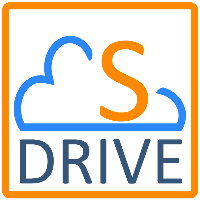-
Installation
Go to "S-Drive Product Page" (https://sdriveapp.com). And click "Get S-Drive" button. Answer the questions, confirm the installation and click on "Install" button. After submitting your Salesforce.com password click Continue/Next until the UI asks you to choose security level. Click on "Grant access to all users" and click "Next" and click "Install". For detailed instructions refer to S-Drive Installation section. -
Activating S-Drive
Go to S-Drive Configuration from App Launcher. If it is not activated yet, page will be redirected to S-Drive Activation page. If Remote Site Settings are configured correctly, you need to complete "Step 2: Configure Amazon S3 Credentials", "Step 3: Configure Amazon S3 Bucket Name" and "Step 4: S-Drive Authorization" sections.-
For Step 2, you must have Amazon S3 Access Key and Secret Key information to use with S-Drive.
-
For Step 4, you need to create a free S-Drive account and authorize S-Drive to connect your organization at https://portal.sdriveapp.com
-
-
Displaying S-Drive Tab
For Salesforce Classic, go to "Setup" > "Personal Setup" -> "My Personal Information" -> "Change My Display". Click "Customize My Tabs" button. If you don't find the link, try "My Settings"> "Display & Layout"-> "Customize My Tabs". Select "Sales" from the "Custom App" drop down box. Move "S-Drive" from "Available Tabs" box to "Selected Tabs". Click "Save".
For Salesforce Lightning, go to "App Launcher", there will be a new App Card for "S-Drive", select it. S-Drive App opens in lightning experience with 3 tabs, which are "Home", "S-Drive" for S-Drive folders and "S-Drive Configuration" tab for configuration settings. -
Using S-Drive Tab (for files not associated with any object)
Go to S-Drive Tab in either Classic or Lightning. There you can upload files. -
Configuring out-of-the-box S-Drive attachments
-
Classic
S-Drive comes with preconfigured Account, Case, Contact, Opportunity attachments as overridden. If you want to use S-Drive Attachments on these objects, you can easily enable by following these steps:-
After installing and activating S-Drive, go to "Setup" -> "App Setup" -> "Customize" -> "Accounts" (or Cases, Contacts, Opportunities) -> "Button and Links"
-
Click "Edit" next to the "View" label.
-
Select "Override with" as "Visualforce Page" and select the correct bundled page (AccountFilePage for Accounts, CaseFilePage for Cases, ContactFilePage for Contacts, OpportunityFilePage for Opportunities) from the dropdown and click Save.
-
You should see the Account (or Case, Contact, Opportunity) Files section in your individual object pages' bottom section.
-
-
Lightning
S-Drive comes with global S-Drive component that can be used for any type of objects (Account, Case, or Custom Objects). You can easily add S-Drive Lightning component to any record page by following steps:-
On the any objects record page, (for example Account) click settings menu button ( ) on the top right. Select "Edit Page" option.
-
On the left side, under "Lightning Components" section > Custom > there is "SDrive" lightning component. Drag and drop the component to the record page wherever you want.
-
After component is added to record page on the right side, there will be attributes. Please fill these attributes correctly (Please check S-Drive Advanced User Guide to get detailed information).
-
Parent Object Name: Object name without prefix that own files (i.e. Account, MyCustomObject__c)
-
Object Namespace Prefix: If there is a prefix for parent object, you should put it here. (For Account it should be empty, for Custom object it should get you org prefix. i.e. for "cg_MyCustomObjectc" it will be "cg_")
-
File Object Name: Object name without prefix for files. (i.e. "AccountFile_c", "MyCustomObjectFile_c")
-
File Object Namespace Prefix:
-
If there is a prefix for parent object, you should put it here. (For Account it should be empty, for Custom object it should get you org prefix. i.e. for "cg_MyCustomObjectc" it will be "cg_")
-
Relationship Field Name: For Standart objects it is "[ObjectName]_r" (i.e. Accountr, Caser). For custom objects it is "Parent_r".
-
Default Sort Field Name: It can be object files any sortable field name with prefix. By default, it is "cg_File_Namec" assuming the usage of a managed package file object (please change this to "File_Name_c" if a custom file object is being used).
-
-
"Save" the record page using Save button on top right, then "Activate as Org Default" by clicking "Activation…" button right of it.
-
-
